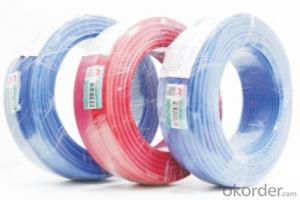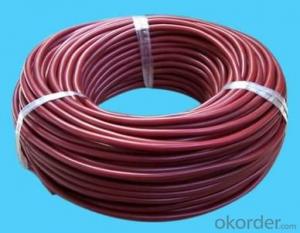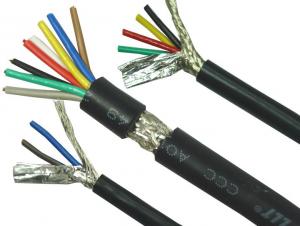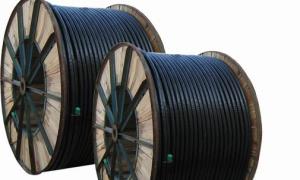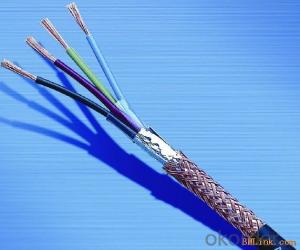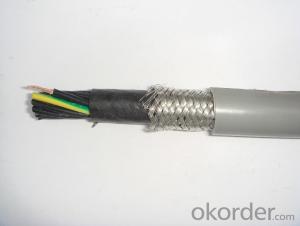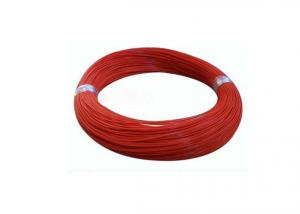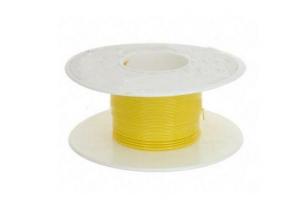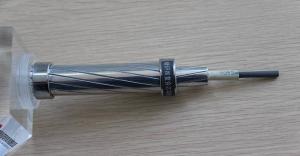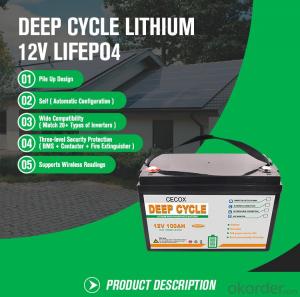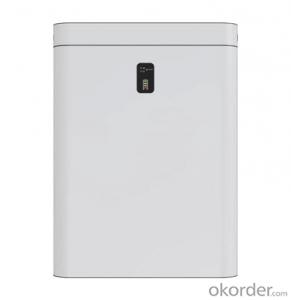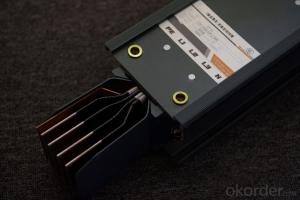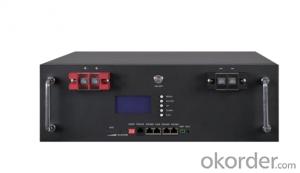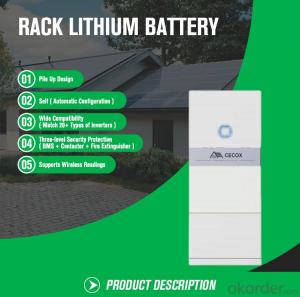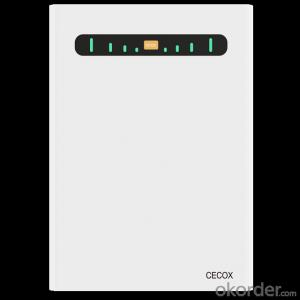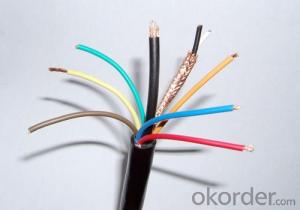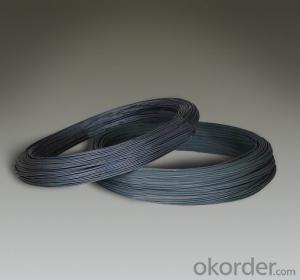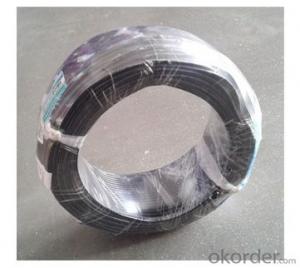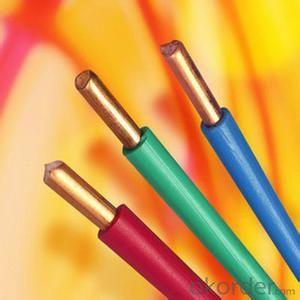Single Core PVC Insulated Flexible Cable 300 /500V
- Loading Port:
- Shanghai
- Payment Terms:
- TT or LC
- Min Order Qty:
- 1000 m
- Supply Capability:
- 100000 m/month
OKorder Service Pledge
OKorder Financial Service
You Might Also Like
1. Product Description:
PVC insulated wire have good quality and the lowest price. If you buy our product, we can be sure that you cannot be regretted. Used in electric meter and electrical equipment and automatic device and so on.
Specific Property for Using
1. The long-time permissible working temperature of cable conductive core is not more than 70C.
2. During short circuit (max permanent time is not more than 5 seconds), the max temperature of cable conductor is not more than 165℃.
3. The difference level of laying cable is not restricted. When laying the cable, ambient temperature is not lower than 0℃.
2. Product Characteristic:
4. They have good chemical stability, and properties of acid resistance, alkali resistance, salt resistance, oil resistance, solvent resistance and flame resistance.
5. Light weight, good bending property and easy installation and maintenance. Technical Requirement
6. Type: BV, BLV, BVR, BVV, BLVV, BVVB and more
3. Product Specification:
Type | H05V-K, H07V-K | |
Voltage Rate | 300/500V, 450/750V | |
Range of Nominal cross section: | 0.50 mm2 ~ 120 mm2 | |
Application | Flexible wiring, for switch control, instrumentation panels and for internal connection. | |
Standard | IEC 60227, BS6500, VDE0281, GB/T 5023, JB/T8734 | |
Constructions | Conductor: Class 5 fine annealed copper wires Insulation: PVC Core color: Brown, Grey, Black, Blue, Green/Yellow or others on request | |
Max. Operating Temperature | 70℃, can be 90℃,105℃ as per requirement | |
4. Reference Picture:

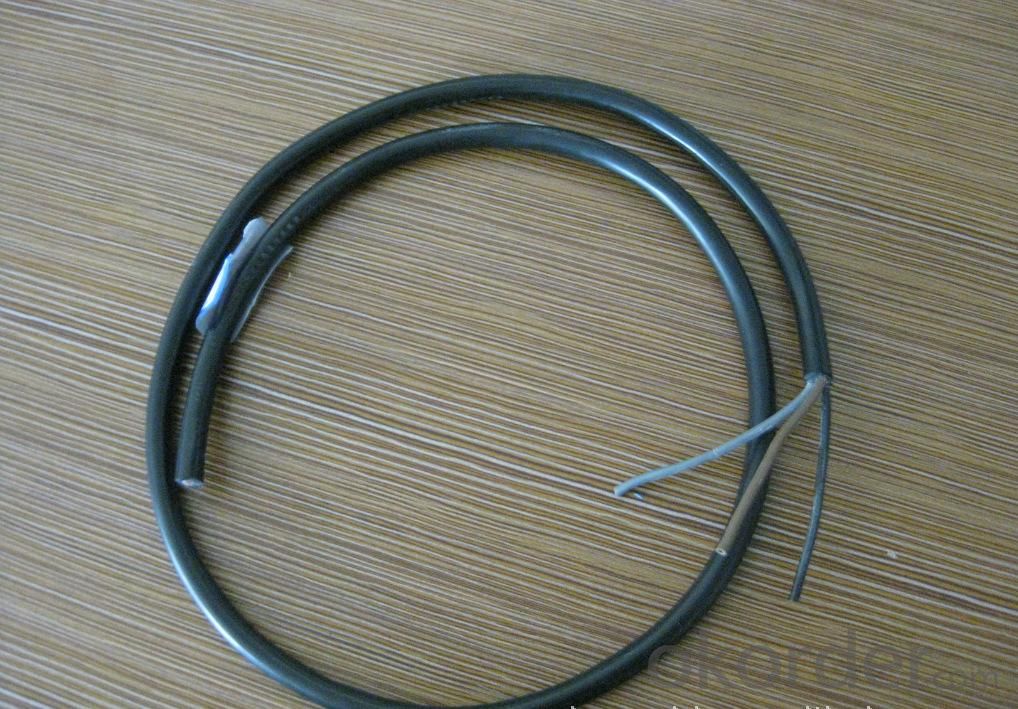
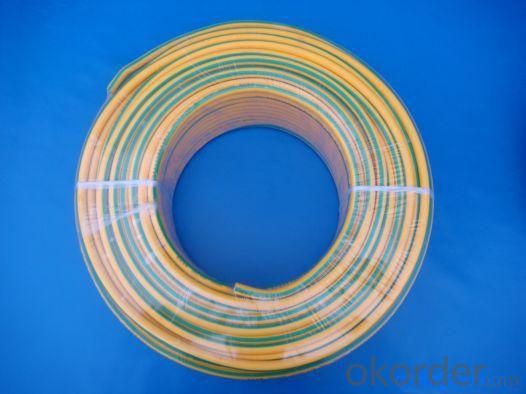
- Q:I have a 1981 Ford f-100 I recently went to start it up and the wires that attach to my sylenoidgo too hot and fried. I know that the wires on the back of the sylenoid go to the starter, but where does the wire that attaches to the front go?
- For your question, I'm going to assume that you are installing an aftermarket stereo. This being said, you will have to break out the ole' test light. You are going to want one wire that has constant voltage, even with they key off. You are going to want another wire that only has voltage with the key either in the on position or accessory position, but not while the key is off. The third wire you want to have is a ground. 1. For the constant voltage wire (voltage all the time even with the key off), take your test light and hook the clip part to a known good ground (Metal part of the dash, make sure it's getting a good ground or else you will get irritated when the light doesn't light up.) With the key off and removed, touch the light to all of the wires. You should only have one of the wires that are hot. Remember which wire this is because it is going to go to the yellow wire on the aftermarket radio harness. 2. For the ignition hot wire (voltage only when the key is in the on or accessory position) You want to turn the key on and touch the other wires. Find one that lights up, then turn the key off and the light should go off on the test light. Remember this one because you will be hooking this one up to the red wire on the aftermarket stereo harness. 3. For the ground wire, hook your clip end of the test light on the constant voltage (voltage all the time) wire. Touch the pencil tip end to the ground wire. If it lights up, it is a good ground. Hope I helped! Happy installling! )
- Q:I have removed all the plaster and lath from a wall that has two windows in it. The wall is in my study and the other side of the wall is an exterior wall on my porch. It now has one electrical outlet between the two windows. That electrical outlet also has an outdoor outlet on the other side of the wallwired to it. Before I insulate and wallboard the wall I would like to remove the single outlet, keep the exterior outlet and wire two outlets into the wall, one under each window.My previous wiring experience is with wiring lighting fixtures.Any help would be much appreciated and thank you in advance for your help.
- pick up a book at the home product store where you will buy the electrical parts you need. It should only cost 10 to 20 dollars. The library might also have this. This is the kind of project those kind of books will have good instructions and photos for. It won't be your exact application, but close enough to where you can figure it out yourself. Don't do it just off written instructions here, as the chance for a misunderstanding between us and you is too high. The pictures will help you confirm that you have the right situation matched to the right instructions. One concern I have is that lath and plaster homes often have a mix of old knob and tube wiring, conduit, and romex style wiring. How you transition from one to the next is important, so if you are planning to change the style at the exterior outlet box, its worth reading up on grounding techniques, especially if you are working with knob and tube. Good luck!
- Q:Wire inside the two lines, red and black, black line is the line of fire or zero line ah?
- Generally stipulated that black is zero line, but the special situation is another matter.
- Q:have a clifford alarm/remote starter and it completely doesn't work. if it is taken out, will it possibly mess up my electrical wires and cause my car to be messed up since the wires in a car are touchy? the alarm was already installed by the previous owner when i bought the car and i have the papers of how he wired it
- It could mess things up. If you are not familiar with how they are installed, I would take it to someone who can remove it for you.
- Q:I'm 16 now, but 5 years ago I started doing electrical work at home without anyone's supervision. I changed a few outlets and switches with new ones, and wired some new outlets in the basement where there weren't any. I did this while my parents went out bowling for the evening. If your son did that, how would you feel about that? I wired everything according to code, and turned off the right breaker while working on things.
- I think it's wonderful that you've found a calling. Being an Electrician is a great profession. That being said, electricity is nothing to fool around with. Even if you did wire everything according to code, as a parent I would be totally freaked out if I learned my 11 year old (whose hobby is electricity) did some electrical work without supervision. Perhaps you'll understand parents' concern when you have a child of your own .
- Q:What are the meanings of the English symbols on the chart?
- PVC is PVC, the most commonly used, cheap. PC is polycarbonate, expensive, high strength, with a long time. . PVC resin plastic products highlight the advantages of flame resistance, wear resistance, chemical resistance, gas, low moisture permeability of water vapor. In addition, comprehensive mechanical properties, product transparency, electrical insulation, insulation, muffler, shock resistance Ye Hao, is the most cost-effective general-purpose materials. Defects are poor thermal stability and impact resistance, whether it is hard or soft PVC process prone to brittle. . PC (polycarbonate) resin is a good performance of thermoplastic engineering plastics, with outstanding impact resistance, creep resistance and dimensional stability, heat resistance, low water absorption, non-toxic, excellent dielectric properties, Is the only five engineering plastics with the only good transparency of the product, but also in recent years, the fastest growing general engineering plastics.
- Q:If possible give me specifics, date month anything. If there is a document or website you know of that would help as well. Thanks in advance.
- The electrical code is national Ohio may require more the NEC(national electrical code) but not less. Even if they did try to make there code less any electrician would be liable for damage cause if he intentionally and knowing installed less than the NEC Do you mean for 220v appliances like dryers and stoves? off the top of my head 1996 I started in the trade in 95 and i remember it being talked about alot and i have never installed a 3wire A new code is put out every three years Wiki says 1999 here is a link
- Q:1) I want to install a ceiling light fixture (chandelier style) but I don't have a ceiling outlet box. 2) I want to convert the chandelier to a lamp that gets plugged into a regular outlet, so I have a) the chandelier w/ it's own cord (meant to be attached to the ceiling box) and b) 20 ft of regular cord attached on one end to a quick clamp plug.3) On the 20ft regular cord, and I can tell on this cord which wire is hot b/c one side is smooth (hot) and the other side is ribbed (neutral). Unfortunately, the cord from the chandelier itself is SMOOTH on all sides and is not marked white/black, smooth/ribbed, hot/neutral or with any other indicator that would allow me to tell which side is which. Hence, I don't know which chandelier wire to attach to which cord wire.Please help!
- You can purchase a tester for about $10.00 that looks something like a pen or pencil. It is battery operated and all you have to do is the touch it to the wire and mash the spring clip and if the wire is hot it will illuminate. You do not have to take any wires loose and it is completely safe. You can purchase one at The Home Depot.
- Q:Hello! I have two exact same porch lights. I was moving one lamp to test location #2 (the other light turned out to be bad, just wanted to make sure power was ok) and I thought I wrote down which wires from the wall (outside on condo patio) went into the wires on the lamp but now I see I have FOUR wires coming from the walland only three for the lamp.I seem to have two white wires, or at least I cannot see any color outside of the grey paint from when the building was painted. The third is black and the last is green and I can see the color of those wires and I am sure they were connected to the ground and the power. Now, finally my question.do those two white wired go together with the white wire from the lamp? Please email me if you need further explanation or a picture of the wiring, Thank you so much for your help! I thought I had my bases covered but I dropped the ball!!
- The 2 white wires go together and connect to the white wire on the light fixture, the black to the black and the green to ground
- Q:I am installing a new exhaust fan in my bathroom and along the joist I will be attaching it to, there is a black electrical wire that runs right along it. There is a bit of play in it, and I guess I can tack it upwards to move it out of the way, but was wondering what would be the best way to take care of this. I think the original installation had the fan either pinned up against the wire or had the wire sitting on top of the fan unit. The new fan unit is bigger, so I don't think it can sit on top of the box. Note: this wire is not the same wire that is providing electricity to the fan.
- That's a situational judgment. If you put it above the fan, you have to be pretty certain that there's no chance that nails won't be coming down from the floor above. It's good to have the wires at least 1 and 1/2 inches away from ceilings and floors. You might want to give a gentle tug on the wire to see if you have enough play to anchor it safely mid-joist. It may look like crap, but you might want to add a piece of wire to lengthen it. You would want to put a junction box where each connection is made. It's not a good idea to bury junctions, so you want them accessible with cover plates.
1. Manufacturer Overview |
|
|---|---|
| Location | |
| Year Established | |
| Annual Output Value | |
| Main Markets | |
| Company Certifications | |
2. Manufacturer Certificates |
|
|---|---|
| a) Certification Name | |
| Range | |
| Reference | |
| Validity Period | |
3. Manufacturer Capability |
|
|---|---|
| a)Trade Capacity | |
| Nearest Port | |
| Export Percentage | |
| No.of Employees in Trade Department | |
| Language Spoken: | |
| b)Factory Information | |
| Factory Size: | |
| No. of Production Lines | |
| Contract Manufacturing | |
| Product Price Range | |
Send your message to us
Single Core PVC Insulated Flexible Cable 300 /500V
- Loading Port:
- Shanghai
- Payment Terms:
- TT or LC
- Min Order Qty:
- 1000 m
- Supply Capability:
- 100000 m/month
OKorder Service Pledge
OKorder Financial Service
Similar products
New products
Hot products
Related keywords






